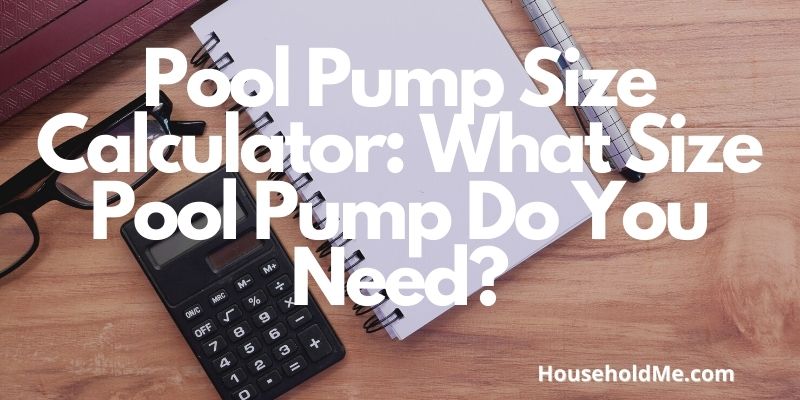Once the approximate volume of the pool has been determined in gallons, the next step is to calculate the minimum flow rate required for the pump. This is done by calculating the Gallons Per Minute (GPM), which uses the size of the pool and number of “turnovers” needed each day, known as the turnover rate.

The industry standard for saltwater pools and the more traditional chlorine pools is 2 turnovers per day.
There are several options regarding the GPM calculation. Some people choose to run their pool pump for the whole 24 hours in a day, which decreases GPM needs. Another option is to run the pump in two segments throughout the day. Typically, these segments can be in cycles of 6 hours, 8 hours or 10 hours.
Now it’s time to calculate the minimum flow rate needed for any of these options.
<<<calculator>>>
Ultimately, the goal is to achieve greater efficiency, by balancing the savings made on electricity bills with the horsepower of the pump and the balanced water chemistry. For instance, if the pump is run for longer amounts of time at low horsepower, there will be a more balanced water chemistry, but higher electricity bill. Conversely, higher horsepower and shorter lengths of time will mean lower electricity bills.
Variable speed pumps for the pool are particularly useful, as they can be set to slow down and speed up as required, thus giving much safer pool chemistry, more efficient energy setup and consequent savings on electricity bills.
Now we can move to the next stage of sizing the pool pump, which is finding the maximum flow rate.
The Maximum Flow Rate
Luckily this is quite an easy step and doesn’t involve too much in the way of difficult mathematics. The important aspects are the plumbing system and the other equipment for the pool, which should also have some documents relating to maximum flow rates.
The first thing to look at is the filters.
Filters
Pool filters come in three different types: sand, cartridge, and DE. Each type has a different maximum flow rate which depends on the surface area. It is important to keep under the maximum flow rate for whichever filter system is being used, otherwise there may be some damage caused.
The flow rates for the three common filter types and sizes are:
- Sand Filters – generally, the typical range for these filters is between 19-22 Max GPM for every square foot of the surface area.
SURFACE AREA | GALLONS PER MINUTE |
1.8 sq. ft. | 40 |
2.3 sq. ft. | 50 |
3.1 sq. ft. | 60 |
4.9 sq. ft. | 100 |
- Cartridge Filters – these filters are much larger and less precise. On average, the typical range for these is between 0.3-0.35 GPM for every square foot of the surface area.
SURFACE AREA | GALLONS PER MINUTE |
100 sq. ft. | 32-38 |
200 sq. ft. | 55-75 |
300 sq. ft. | 80-112 |
400 sq. ft. | 100-150 |
- DE Filters – these filters tend to fall within a range, too. It is advisable to allow for about 1.75 GPM for every square foot of the surface area, and to assume somewhere in the middle of the given ranges.
SURFACE AREA | GALLONS PER MINUTE |
24 sq. ft. | 36-48 |
36 sq. ft. | 54-72 |
48 sq. ft. | 72-96 |
60 sq. ft. | 90-120 |
The next thing to look at is the maximum flow rates for plumbing.
Plumbing
It is not advisable to give the pipes more pressure than they can take. The maximum flow rate for the plumbing is dependent upon the size of the pipes, and should even be labelled clearly on the actual system.
If this is not the case, either use the common values below, or ask a reputable contractor.
PIPE SIZE | GALLONS PER MINUTE |
1.5” | 43 |
2” | 73 |
2.5” | 120 |
REMEMBER: the pipe size may differ throughout the whole pool system. Pipes entering a spa, for instance, may be different to those used in the main pool. Therefore, it is always advisable to use the lowest maximum flow rates when sizing the pool pump. Otherwise, the setup for different parts of the pool system could be damaged.
The Minimum and Maximum Flow Rate Range
Using the information above will determine minimum and maximum flow rates for the pool setup, and these can then be combined to arrive at the flow rate range, which is needed as part of the two main specifications for finding the size of pool pump required.
For example:
There is a 15,000 gallon inground pool with two turnovers per day and the minimum flow rate is 20.8 GPM.
In addition, there is a sand filter measuring 2.3 square foot at 50 GPM and plumbing measuring 1.5″ at 43 GPM. Use the lower of these two figures to avoid overworking any of the pool components. Thus, the maximum flow rate is 43 GPM.
This means that the flow rate range for this example is 20.8-43 GPM.
The final specification needed for pool pump size is total dynamic head.
Total Dynamic Head (TDH)
This is a resistance metric that gives the total amount of resistance in the pool’s hydraulic system. All the component parts of the pool system, such as filter, pipes, pump, backwash valve, heater, and return, affect the flow of water through the system.
The majority of inground pools are around 50 TDH, whilst above ground pools are usually around 30 TDH. This topic will be covered in more detail in another post.
Final Specifications
This is now all the information needed. In any case, all types of pool pump have charts that give estimates of horsepower based on total dynamic head and flow rate ranges.
For the inground pool example used above, the pool pump would need to have a flow rate range of 20.8-43 GPM and 50 TDH (also called Feet of Head).
And that’s it! There are also articles recommending the best single and variable speed pumps, as well as information about daily running times for pumps.
